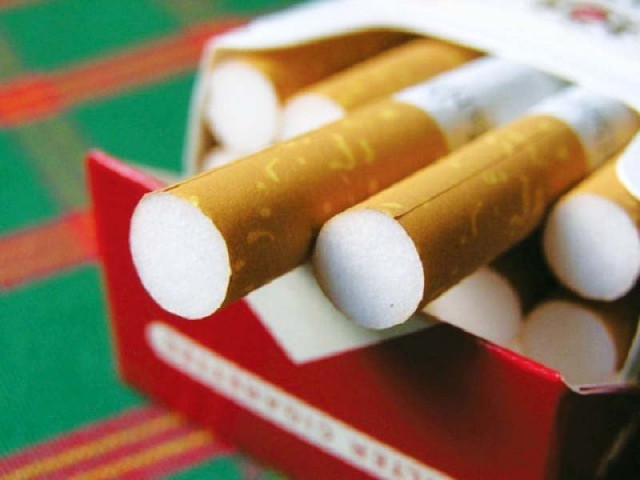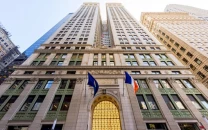Tax relief of billions for smokers
Govt quietly increases taxable threshold for expensive cigarette brands

Contrary to Prime Minister Shehbaz Sharif’s instructions and the main coalition partner’s lobbying for increase in taxes on smoking, the government has quietly given billions of rupees in tax relief by increasing the taxable price threshold for the expensive cigarette brands.
The change was made on the eve of approval of the budget by the National Assembly, which also eroded the benefits that the government wanted to earn by slightly increasing the federal excise duty on cigarettes.
A government that could not stand before the International Monetary Fund (IMF) to protect the salaried class from the additional tax burden changed the taxable price slabs to keep smoking affordable. The change was not made on June 10 aimed at avoiding public debate on the issue.
The government has increased the threshold for higher duties on the expensive cigarette brands, according to the Finance Act 2022 that was enforced from July 1.
Before the budget, the government was charging excise duty of Rs5,200 per 1,000 cigarettes, if the printed retail price was over Rs5,960 per 1,000 sticks.
In the budget, the government increased the excise duty by Rs700 or 13.5% to Rs5,900 per 1,000 cigarettes for the expensive brands. The per cigarette additional tax impact is only 70 paisa.
However, in order to offset the impact and also bring a few expensive brands in the lower tax slab, the government also increased the taxable threshold for the upper brand cigarettes from the printed price of Rs5,960 per 1,000 sticks to Rs6,660 – a benefit of Rs700 on every 1,000 cigarettes.
Had the government not increased the upper brands’ taxable price limit, many brands that now fall in the low tax tier would have been shifted to the upper tier. This might have discouraged smoking in the country.
Before the budget, the FED on the locally produced cigarettes with a retail price of less than Rs5,960 per 1,000 cigarettes was Rs1,650 that in the budget was increased to Rs1,850.
This amounts to additional tax of a mere 20 paisa per cigarette. The threshold to determine the low tax rate was up to Rs5,960, which has also now gone up to Rs6,660.
After the change in the taxable price slab, a few brands that were earlier taxed at a reduced rate of Rs5,200 would now be charged a tax of Rs1,850 per 1,000 sticks.
“The government has tricked with the people who advocated increasing the tax burden to discourage smoking,” said Dr Ziauddin, Country Lead on Tobacco Control, Vital Strategies.
He argued that after the increase in the taxable slab limit, the smoking prevalence would increase, which would also significantly push up the cost of illness.
As many as 31 million adults (age 15 +) or about one-fifth of the total adults currently use tobacco, according to Social Policy and Development Centre (SPDC). It added tobacco use is the leading cause of death due to non- communicable diseases (NCDs), such as cancer, chronic respiratory diseases, and cardiovascular disease.
Due to unchanged and low tobacco taxes, Pakistan ranks among the worst-performing countries in the Tobacconomics Cigarette Tax Scorecard that evaluates the strength of tax systems, with an overall tax system score of less than one on a five-point scale.
According to SPDC estimates, more than 260,000 people will start smoking in Pakistan, if tobacco taxes are not raised in 2022-23, while around 150,000 die every year due to smoking related diseases. While chairing a cabinet meeting on new budget proposals on June 10th, Prime Minister Shehbaz Sharif had showed his dissatisfaction with the proposed increase in FED rates and sought that the taxation burden should be further increased by Rs25 billion in the new fiscal year.
However, the changes in the taxable price slabs would not help achieving this objective.
Finance Minister Miftah Ismail had also assured the Pakistan Peoples Party - the main coalition partner - that he would make sure that the tobacco sector will pay Rs225 billion in taxes as against Rs150 billion in the just ended fiscal year. This promise may also remain unfulfilled.
Federal Water Resources Minister Khursheed Shah had said on the floor of the House that Pakistan was among the countries having lowest tax on cigarettes, which was not only reducing revenue but also putting people’s health at stake.
The SPDC research showed that poor households in Pakistan spend a larger proportion of their budget on tobacco than rich households, resulting in less spending on basic needs.
According to SPDC estimates based on IMF projections, approximately 4% of per capita income was required to purchase 2,000 cigarettes in 2020–21, which would decrease to 3.6% in 2021–22 and further decrease to 3.2% in 2022-23 if cigarette prices do not rise.
The low-taxed cigarettes represent the majority of the market, about 88%, the average excise tax share is nearly 45% of the retail price, which is significantly lower than the widely accepted benchmark of 70% of the retail price.
Tobacco is not the only sector that has been given billions of rupees tax benefits. The government has also doled out Rs8 billion income tax relief to the stock market.
According to Pakistan Tobacco Company -one of the two leading manufactures, as per historic practice by the FBR, the threshold between Tier I and Tier II of cigarettes moves in line with increase in Tier I FED rate. This allows for increasing the minimum price of cigarettes sold in the country complementing the public health agenda and increasing the government revenues, according to the company.
Published in The Express Tribune, July 5th, 2022.
Like Business on Facebook, follow @TribuneBiz on Twitter to stay informed and join in the conversation.



















COMMENTS
Comments are moderated and generally will be posted if they are on-topic and not abusive.
For more information, please see our Comments FAQ